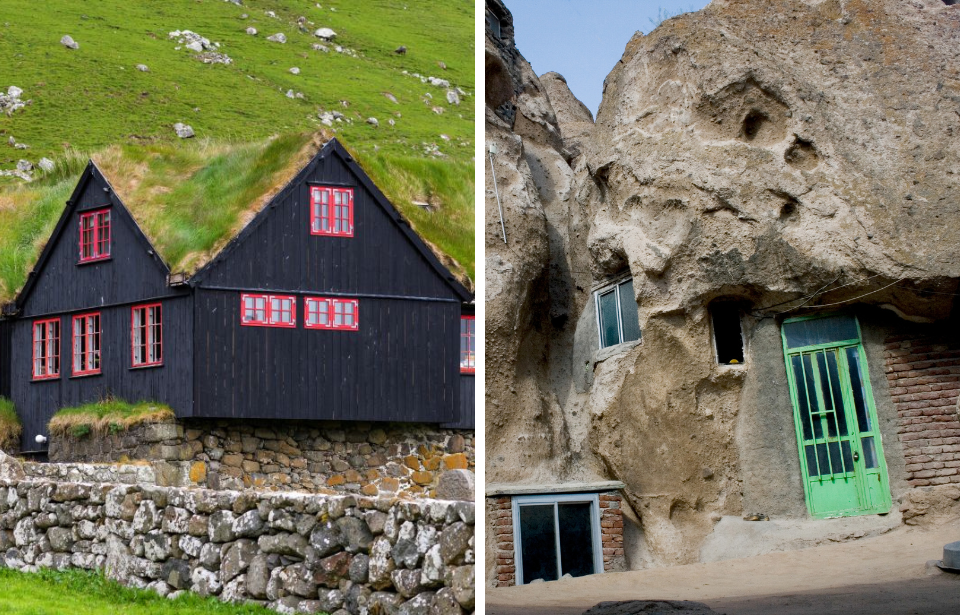Buildings and structures have risen and fallen time and time again over the millennium. However, some structures have withstood the test of time, fending off the forces of nature, human destruction, and more. Found all over the world, here are some of the oldest homes that still stand today.
Kandovan cave houses
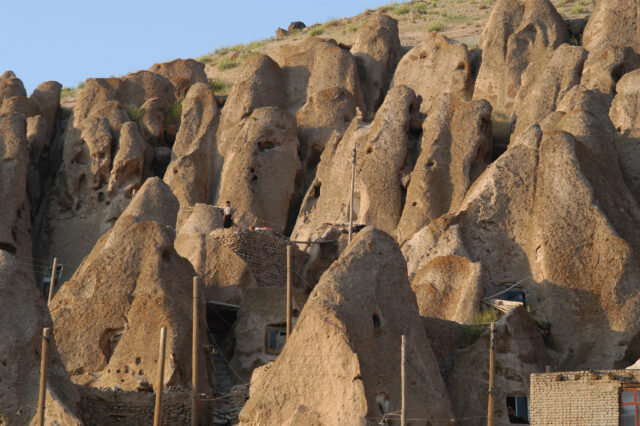
Kandovan, a village nestled at the base of Mount Sahand volcano in Osku, Iran, boasts a unique architectural wonder: troglodyte homes carved into the soft, porous volcanic rock over seven centuries ago. Dubbed Karaans, possibly derived from the local term for ‘beehive,’ these cave dwellings served as more than just shelters, offering protection from both enemy incursions and the extreme temperatures that the region experiences.
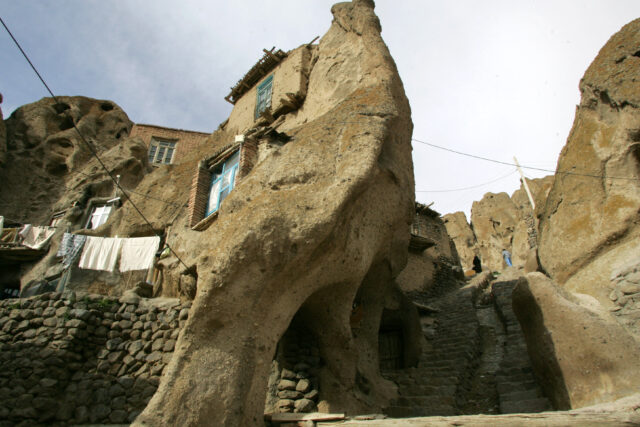
Despite its ancient origins, Kandovan’s allure hasn’t faded; in fact, it has transformed into a thriving tourist destination. With a population in the 600s, the village now welcomes thousands of visitors annually. Tourists flock to marvel at the ingenuity of these subterranean dwellings, appreciating both their historical significance and the resilience they symbolize.
Saltford Manor
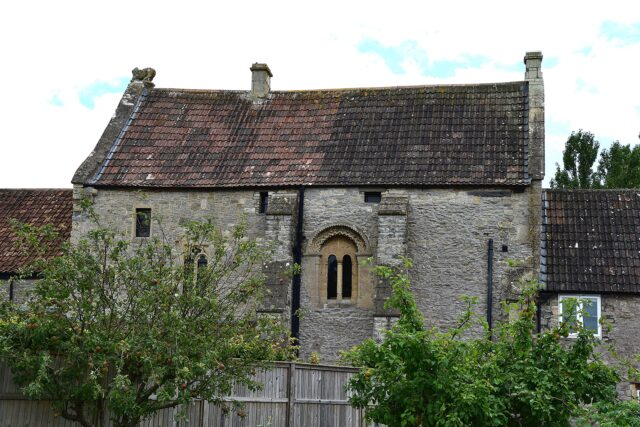
Saltford Manor house, situated in Somerset, UK, stands as a testament to centuries of English history, vying for the title of the country’s oldest continuously inhabited residence. With its Grade II-listed status, this architectural gem has captivated scholars and visitors alike. Architectural historian John Goodall says the origins of this remarkable dwelling can be traced back to the mid-12th century, possibly as early as 1148.
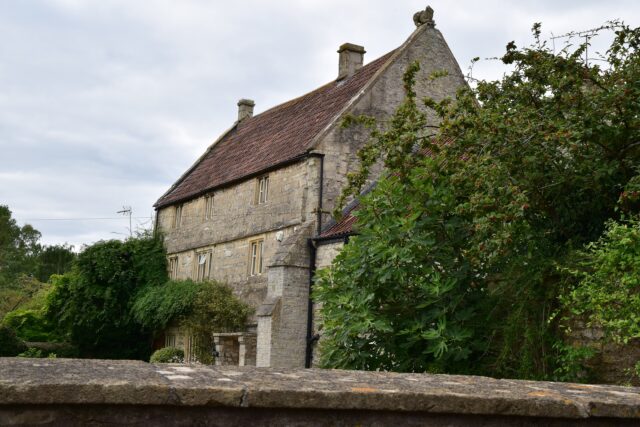
Constructed on land once held by the powerful Earls of Gloucester and the Bishop of Coutances, Geoffrey de Montbray, a confidant of William the Conqueror, Saltford Manor House has witnessed the ebb and flow of English history. From its Norman features, including a master bedroom window reminiscent of Hereford Cathedral, to its 13th-century wall paintings, deemed the oldest surviving medieval frescoes in England, the house bears witness to the passage of time. Despite periods of neglect, the manor has been lovingly restored by dedicated owners, such as James and Anne Wynn, who, in 1997, embarked on a journey to revive its former glory.
Luddesdown Court
Luddesdown Court, a Grade-I listed treasure nestled in the picturesque landscapes of Kent, UK, whispers tales of antiquity. Believed to have been erected as early as the 11th century, this venerable residence predates its contemporaries, including the renowned Saltford Manor.
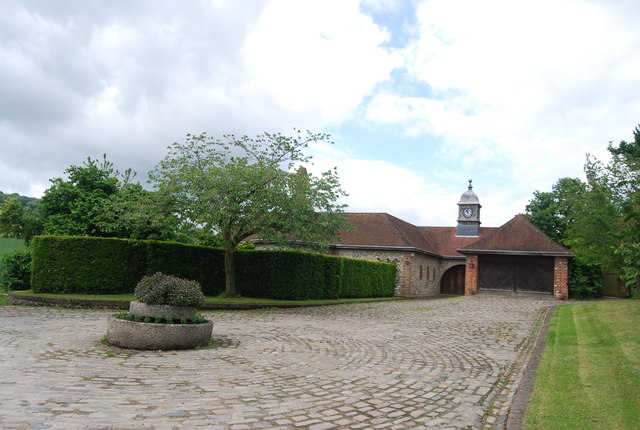
Constructed primarily from stone and flint, Luddesdown Court sprawls over several acres and boasts a rich history. Among its storied past, the manor is said to have been graced by the presence of none other than William the Conqueror’s half-brother, Odo, a figure pivotal in England’s Norman conquest. Over time, the manor has been shelter to noble occupants, including the Franco-English nobleman Aymer de Valence and the Welsh Prince Owain Glynwr, each leaving their mark upon its hallowed halls.
In 1979, Luddesdown Court found a new owner, Petter Sundt, whose dedication to its restoration breathed new life into it. Under his stewardship, the manor was revitalized, its faded glory resurrected with meticulous care. Sundt’s vision extended beyond mere restoration; he envisioned a modern oasis amidst historical splendor, evidenced by the addition of luxurious amenities such as a swimming pool, sauna complex, and walled sunken garden.
Sky City, Acoma Pueblo
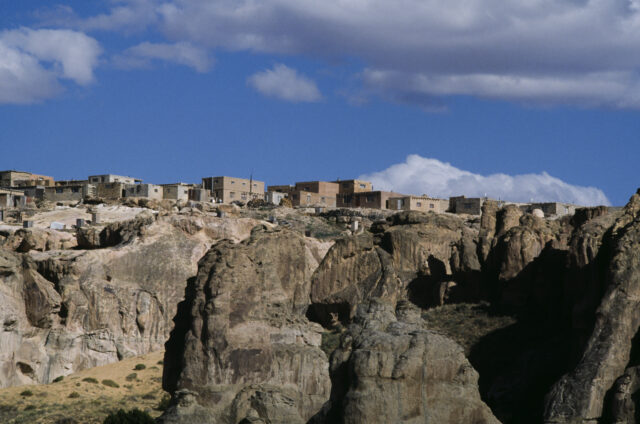
Perched atop a majestic 365-foot mesa near Albuquerque, New Mexico, Acoma Pueblo, also known as Sky City, stands steeped in myth and history. This ancient settlement traces its roots back to at least the 12th century, though oral tradition among the Acoma suggests an even earlier genesis. These early dwellings were crafted from sandstone and adobe bricks, and archaeologists believe that Sky City’s elevated perch provided refuge to its residents for millennia, shielding them from the relentless raids of Navajo and Apache riders.
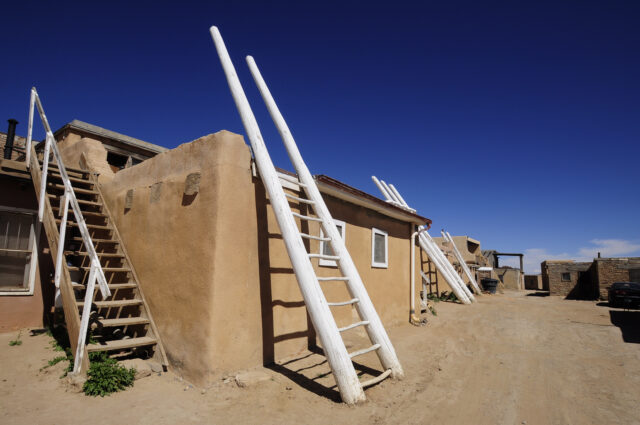
Accessible only through a staircase hewn into the sandstone, the village stood as a fortress against would-be invaders, each a testament to the ingenuity and resilience of its builders. Multi-layered terraces, entered by ladders rather than conventional doors, allowed for swift defense strategies, with the ladders easily removed to thwart potential attacks from rival tribes.
Taos Pueblo
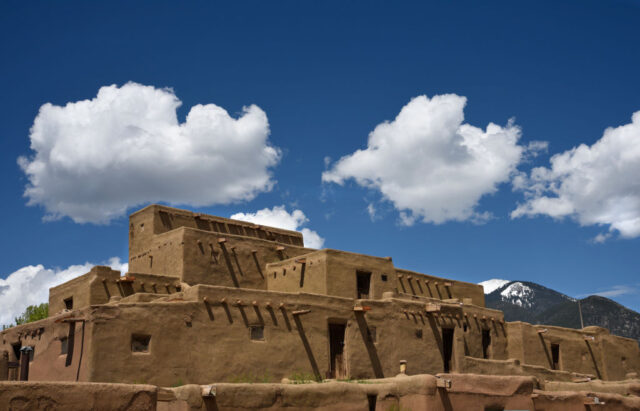
Nestled within the arid climate of the Sangre de Cristo Mountain Range, Taos Pueblo stands as a timeless monument to the endurance of the Red Willow People. Believed to be one of the oldest continuously inhabited sites in the United States, this sacred land has bore witness to the changes of time. It is a testament to the resilience of its inhabitants, who have called it home for over a thousand years.
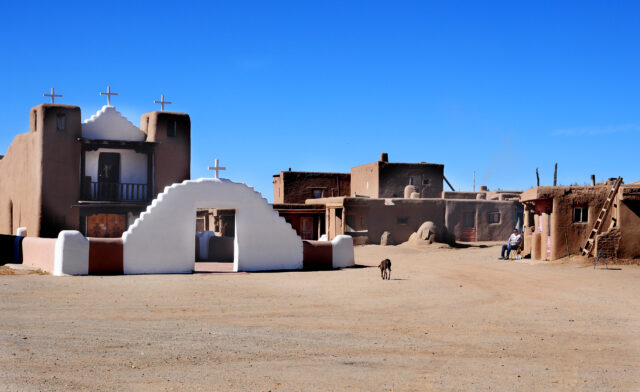
Built on either side of the Rio Pueblo, Taos Pueblo’s adobe houses, including the iconic Hlauuma (North House), rise proudly against the backdrop of the New Mexico sky. These multi-level structures, reminiscent of their counterparts in Acoma Pueblo, stand as symbols of tradition and heritage, their earthen walls echoing with the voices of generations past. While offering glimpses into the past with their ancient construction methods, some houses in Taos Pueblo feature doors on their main floors, a departure from the ladder-entry design seen in other Pueblo settlements.
Despite its ancient origins, Taos Pueblo continues to captivate visitors from around the world, designated as both a UNESCO World Heritage Site and a National Historic Landmark. However, the Pueblo remains steadfast in its adherence to tradition, eschewing modern conveniences such as electricity and indoor plumbing, as they are deemed incompatible with the spiritual essence of the land.
Viking farmhouse
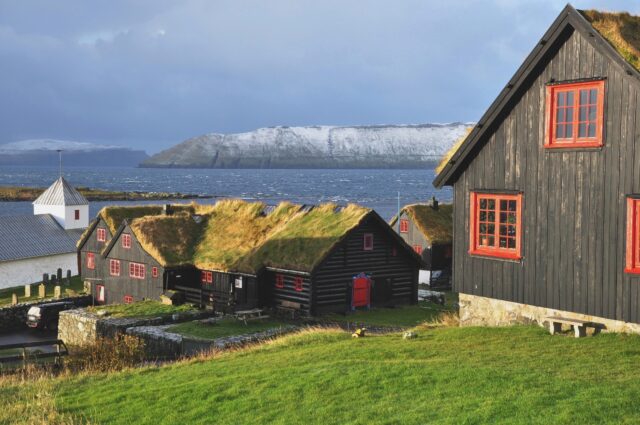
Perched on the windswept shores of Kirkjubøur in the Faroe Islands, the Viking farmhouse stands as a testament to centuries of resilience and tradition. This wooden abode hailed as one of the oldest continuously inhabited homes in the world, was constructed in the 11th century from driftwood sourced from distant shores of Norway, as there has long been a scarcity of timber in the Faroe Islands.
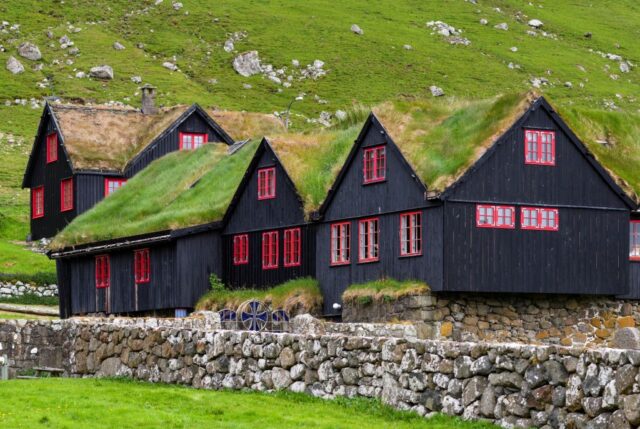
Its stout walls and turf roof, crafted to withstand the harsh elements of the North Atlantic, serve as a silent sentinel against the relentless fury of nature. Initially serving as a Catholic episcopal residence and seminary, the farmhouse witnessed pivotal moments in Faroese history, including the drafting of the Sheep’s Letter by Bishop Erlendur in 1298, marking the earliest known legal document in the islands.
Despite changing tides of history, the farmhouse has remained a steadfast anchor in the lives of its inhabitants, passing through 17 generations of the Patursson family. Each successive eldest son, bestowed with the title of the “King’s Farmer,” has dutifully tended to the land, perpetuating a legacy that stretches back centuries.
Serravalle
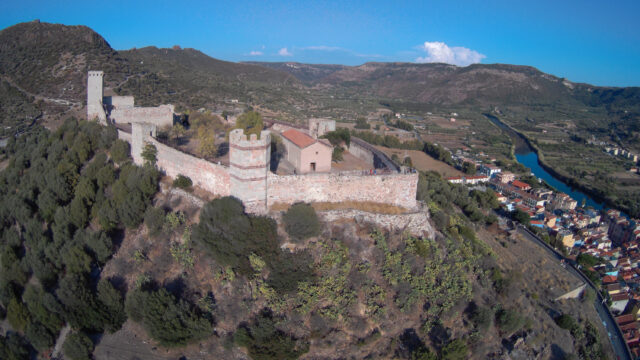
Nestled amidst the rolling hills of Emilia-Romagna, Italy, the hamlet of Serravalle emerges as a timeless bastion of history and intrigue, its medieval tower standing sentinel between the bustling cities of Modena and Bologna. Rooted in antiquity, the foundations of Serravalle whisper tales of an ancient Roman village, razed to the ground in the tumultuous 8th century, only to rise from the ashes a century later.
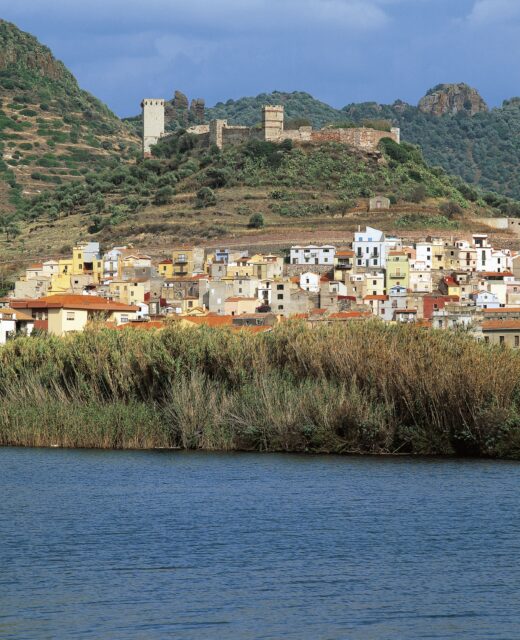
At its heart stands a formidable fortress, its medieval entrance and a watchtower bearing silent witness to centuries of strife and conquest. Legends abound within the castle’s storied walls, with whispers of the legendary Charlemagne gracing its halls as he journeyed to Rome for his coronation in the 9th century.
Beyond its towering ramparts lie hidden secrets, including a subterranean passage said to connect an 18th-century palace to the nearby tower. Legend has it that these darkened tunnels bear witness to the spectral presence of lost souls, the restless spirits of a Boccadiferro lord’s ill-fated wives, forever haunting the labyrinthine depths of Serravalle’s past.
Aleppo Citadel
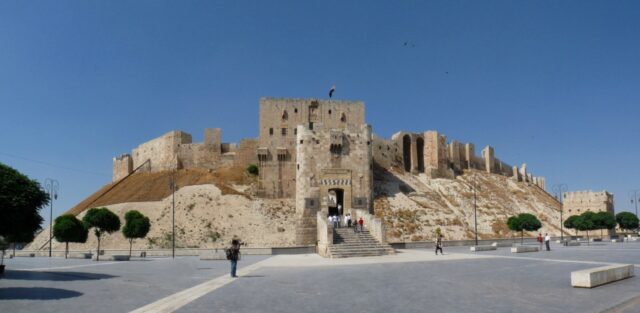
Dominating the skyline of Aleppo, Syria, the ancient citadel‘s imposing walls have seen the rise and fall of civilizations. Dating back to the third millennium BC, the citadel’s roots run deep, its foundations laid by the hands of ancient craftsmen. Over the centuries, it evolved from a temple dedicated to the Mesopotamian storm god Hadad to a formidable fortress, its strategic importance attracting the attention of conquerors and rulers alike. The citadel has exchanged many hands yet still remains standing today.
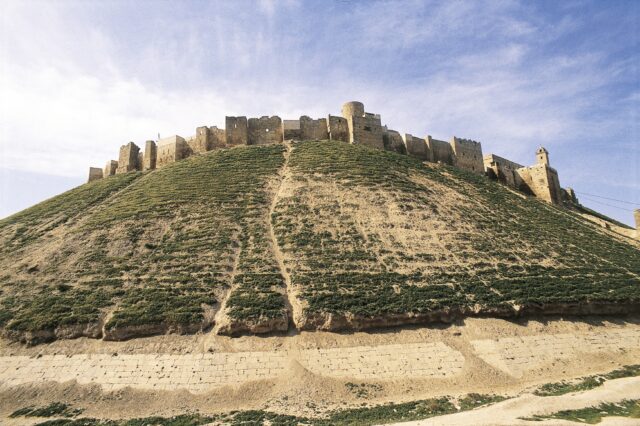
Designated as a UNESCO World Heritage Site, it serves as a living testament to Aleppo’s enduring resilience. Even during the darkest days of the 2010s, when the citadel bore the brunt of the brutal Battle of Aleppo, its spirit remained unbroken.
More from us: World’s Fair Buildings That Are Still Standing Today
Now, as Aleppo strives to rebuild and recover, the citadel stands as a beacon of hope, its gates once again open to the public as it undergoes extensive restoration—a symbol of Aleppo’s unwavering determination to rise from the ashes and reclaim its rightful place in history.
